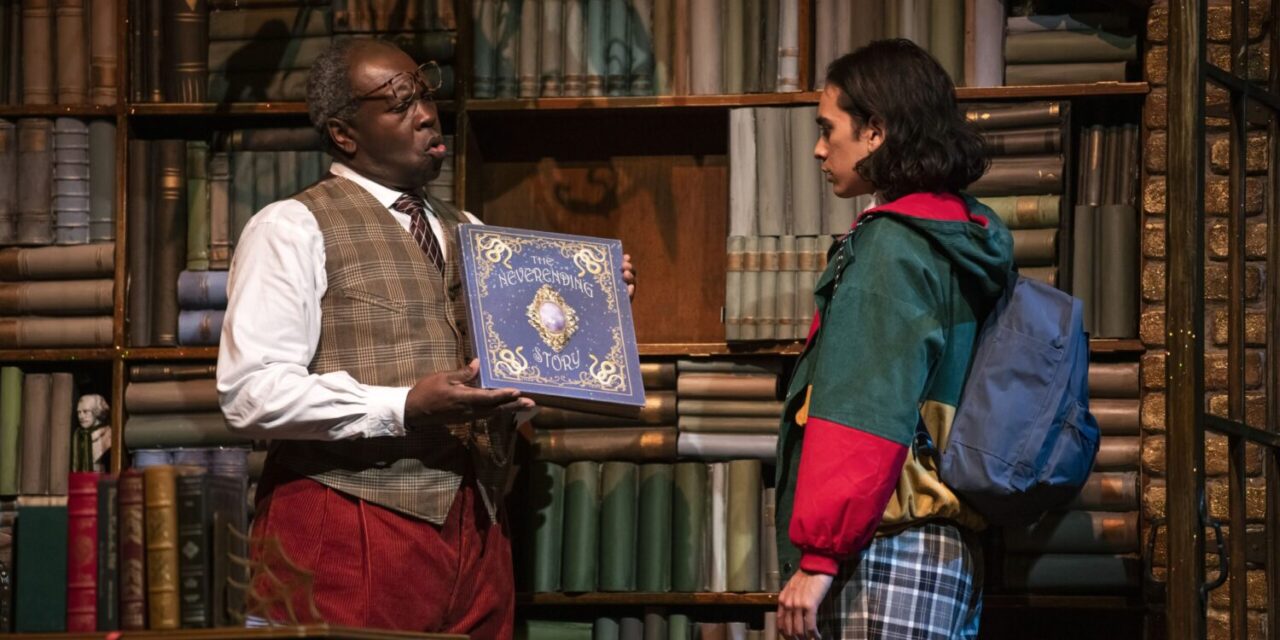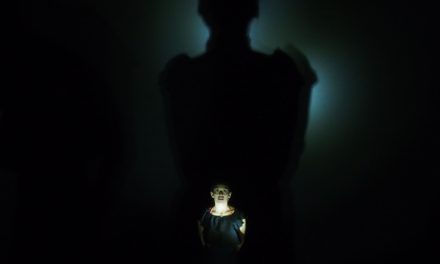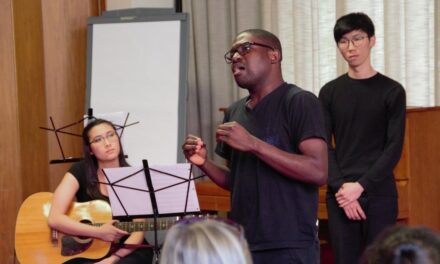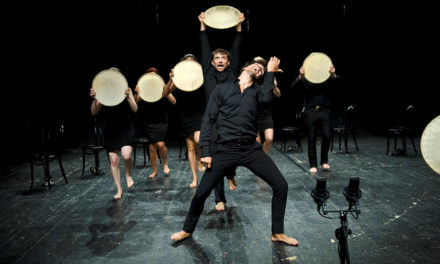The Neverending Story is a testament to the importance of imagination and the power of stories. When life seems to be closing in around us, the story reminds us that imagination can be the force needed to start anew and lift ourselves up. It makes sense, then, that director Jillian Keiley’s production for the National Arts Centre – adapted by David S. Craig from Michael Ende’s popular novel – uses a number of different techniques to showcase imagination on stage, almost all of them visual. It’s clear that no expense was spared in creating the visually slick world, filled with magical creatures and highlighter-toned colors. It’s certainly visually striking. Unfortunately, the core story often feels forgotten at the service of the visuals, making the emotional impact of its message fall flat.
The story is about a young boy, Bastian, who escapes the struggles of the real world, including bullying and the emotional upheaval of losing his mother, by losing himself in books. One day, as he is running away from his tormentors, he accidentally stumbles into a bookstore, where a mysterious bookseller, Coriander, tells him about The Neverending Story. The idea of it captivates Bastian so much that he steals the book while Coriander is distracted and spends the rest of the school day and night reading it hidden in the attic of his school. As he continues reading, he gets drawn into the story and starts identifying with Atreyu, a young hunter on a quest to save the Childlike Empress and his world from “The Nothing,” which threatens to ease all the stories from the land of Fantastica.
The set design, lighting, and puppetry are the true stars of the Keiley’s production and work together to create the world of Fantastica. The design and puppetry is whimsical and perfectly in line with the feel of the story. It’s obvious that much time and care went into crafting every creature in the fantasy world and the creativity in presenting Atreyu’s wise and kind horse companion Artax, Falkor the Luck Dragon, Morla the Turtle, and the creepy spider Ygramu bring the world of Fantastica to life. The design elements are additionally enriched by the use of lighting. The production is built around an ever-present tension between light and dark as brought to life by lighting designer Leigh Ann Vardy. As “The Nothing” leaches into and through Fantastica, it spreads with it an ominous sense of stillness and emptiness. Stars, presented by pin-pricks of LED lights on a light-absorbing black curtain, flicker and disappear as the plight of the land grows more serious and its stories die out one by one. Likewise, the interplay between light and dark allows Keiley and Vardy to create a richer, more layered world.
The work is technically as near perfection as possible, yet there is something jarring about the harsh, cold fluorescent lights that seem in direct contrast to the emotional feel of the story. The show, including Hawksley Workman’s music, create a 1980s synth-pop fever dream music video atmosphere, which comes off as sterile when presented as part of the warm, cozy world of Fantastica. It’s jarring and unfortunate, as the two aspects end up undermining each other.
Andrew Iles is excellent as the hero Atretyu and manages to convey bravery, as well as fear and child-like wonder all rolled into one realistic character. Roy Lewis as the bookseller Coriander is the most memorable performance, despite his small role. He was completely comfortable in the character and delivered an expressive performance full of depth and joy. Andrew Robinson’s Artax was a comforting, calming presence and he delivered the role with conviction and softness.
In The Neverending Story Jillian Kieley shows us a world as it could be, and throws her full force at the visual aspects of the play. While enticing in its own right, the visuals are often at odds with the spirit of the story, taking away from its emotional impact. However, despite that, this was a fun production, with lots for both children and adults to take in.
This article was originally posted at capitalcriticscircle.com on February 3rd, 2020, and has been reposted with permission. To read the original article, click here.
This post was written by the author in their personal capacity.The opinions expressed in this article are the author’s own and do not reflect the view of The Theatre Times, their staff or collaborators.
This post was written by Maja Stefanovska.
The views expressed here belong to the author and do not necessarily reflect our views and opinions.


















